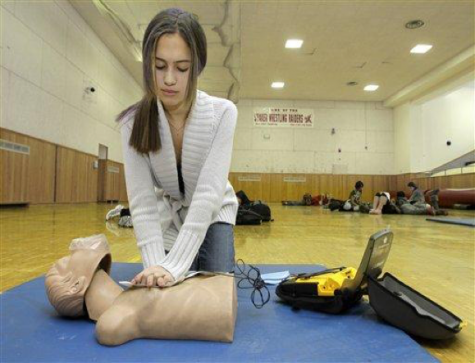More People Should Become CPR Certified
November 10, 2016
Imagine this: Derek, an active teenager, had been swimming all day with his friends at the local pool. Now relaxing on the pool deck, Derek suddenly becomes unresponsive with no pulse or signs of breathing. Luckily, his friends alerted nearby lifeguards, and Derek was able to be revived.
Something similar happened to George Hickman. While at work in Kansas City, Missouri, Hickman went into cardiac arrest. His coworkers were able to save his life with the skills they learned from Red Cross First Aid and CPR/AED training. Two additional lives have been saved at the same company that Hickman works at, the result of being CPR certified.
According to the American Heart Association, 95% of cardiac arrest victims die prior to reaching a hospital to get the medical care they need. If a bystander knew the steps in order to save them, that number could be much lower.
More people should become CPR certified so they have the knowledge if they are ever a bystander or involved in an emergency.
There are no downsides to learning the steps of CPR. According to the American Heart Association, if CPR is done within the first few minutes of cardiac arrest, the chance of survival is doubled, and in some cases, even tripled. Just calling 911 is a helpful act, but in conjunction with CPR, there is an ability to buy time.
Besides having the ability to save a life, knowing CPR has other advantages. According to Medication Aide, a Nursing School Program Northern Virginia, people who are trained in CPR tend to have a better level of self confidence and feel empowered. It also may be a skill that employers look for.
Knowing CPR is shown and proven to have many strong benefits. Find a CPR certification class near you and learn the steps of reviving an unconscious individual. Knowing how to save a life is an important skill to have.







